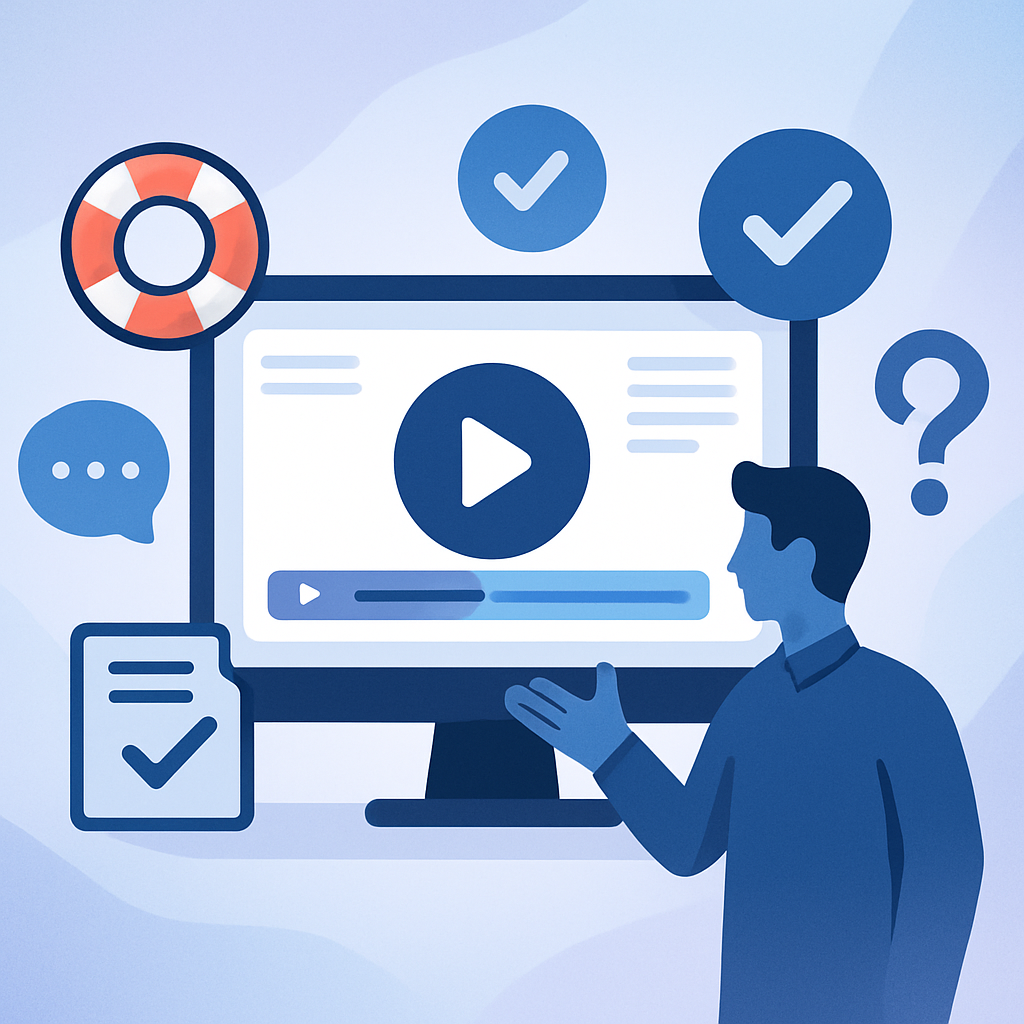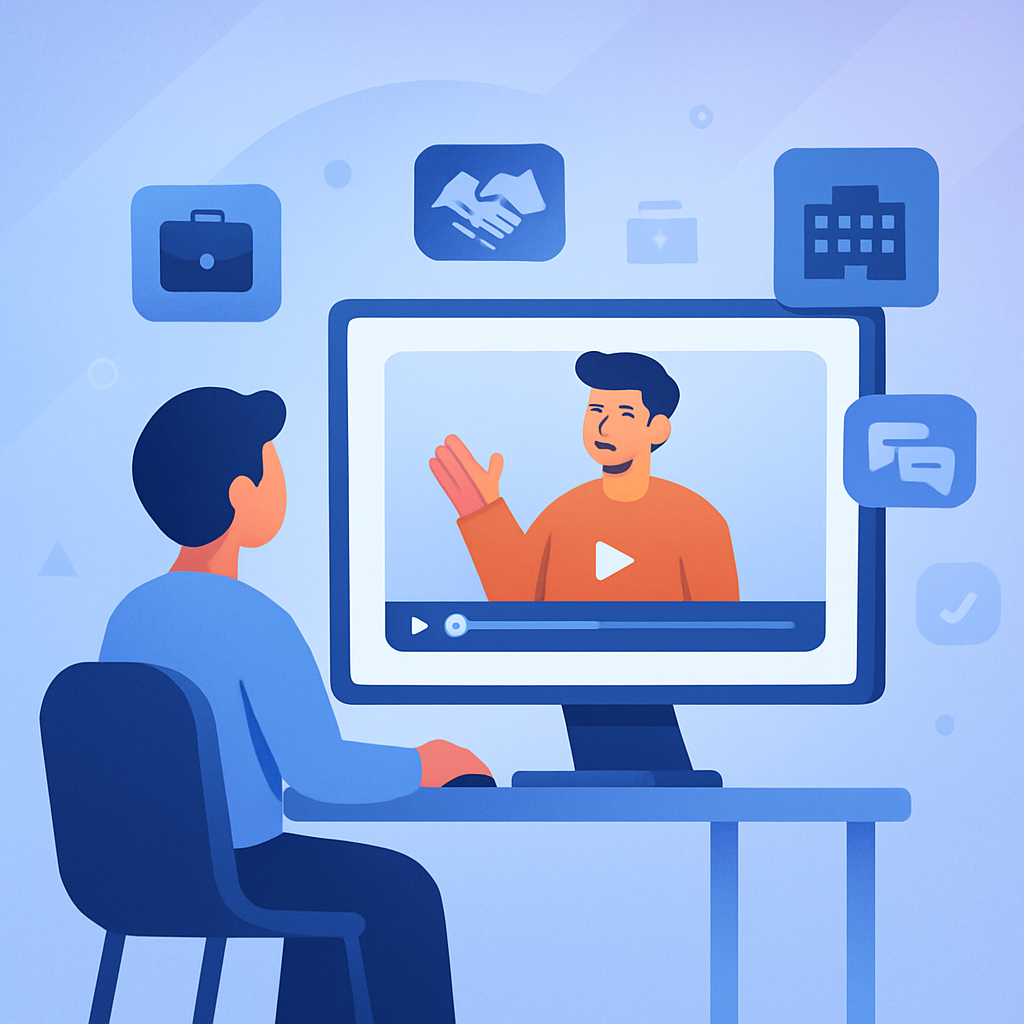
Create AI videos with 230+ avatars in 140+ languages.
Artificial Intelligence is transforming the way we learn.
And, by definition, the way we teach.
In this post, we'll explore the benefits of artificial neural networks and how they have been used to create software that speeds up both your workflow and the professional development of your employees.
Because no matter how clever AI gets, human intelligence will always be number one.
Keep reading until the end for 5 in-depth examples of how real companies use AI to get typically unheard-of results!
Why AI is an excellent tool for L&D training programs
There are a few key benefits to using AI to facilitate deep learning and improve your learning processes.
For the learner, your employee, AI helps:
- Deliver a more personalized learning experience.
- Speed up the delivery of information by democratizing content on learning management systems that are easily accessible worldwide. This also aids reinforcement of learning goals.
- Customize video content to form a more personal one-on-one connection.
For your L&D manager, AI can help:
- Speed up the learning process and increase completion rates. A UCL study found that training courses with AI videos were completed 20% faster than traditional methods, with recall and retention matching videos made with real actors.
- Provides personalized assessment techniques, eliminating the need for traditional evaluation methods.
- Translate training materials into multiple languages, making them accessible globally and speeding up the learning process.
- Free up time spent developing content by becoming digital tutors.
The 2 types of AI you can use for corporate training right now
1. Turn text-to-video in 5 steps
You might have heard of text-to-speech tools that read out something written. Or transcription tools that take can turn speech into text...
But text-to-video really takes L&D programs to the next level.
AI video maker tools such as Synthesia can create both a voice-over and a human avatar from just a bit of written text. This means with a script, you can create professional video training that keeps employees more engaged.
Check out this video to see how it works:
2. Turn thoughts into written scripts using NLP
One of the coolest applications of AI in content creation is Natural Language Processing (NLP). Basically, NLP is a way for computers to understand human language and use it to generate new written content.
In content creation, an NLP AI model uses data collection to analyze language patterns, identify key themes and ideas, and generate written content that meets specific requirements.
Here's how NLP can help automate scriptwriting for videos and audio content:
- Write starter draft scripts for video content based on a subject
- Generate ideas for training videos
- Improve the way your draft script is written by making it concise or punchy
- Generate lists of best practices or tips that you can use in your videos. It can even identify common knowledge gaps that you can then use to create more robust L&D programs!
To start writing a script with AI, we recommend using a tool like ChatGPT or our AI script generator.
Your initial input needs to help the AI by stating the topic, the audience, and the tone of voice. For example, "write a script that teaches corporate employees what data science is, and what data scientists do. Please make it sound friendly and approachable."
Here's an example of a result you might get:

5 inspiring examples of how companies have used AI to drive results
Case Study #1: How Bosch developed 70% more effective training
Bosch is a leading European company in the home appliance industry, with more than 60,000 employees worldwide.
The challenge
Bosch faced a challenge in ensuring that every employee had access to the necessary knowledge, given their worldwide spread. The company turned to video production to address this but found it expensive, inflexible, and not easily accessible to specific groups.
The solution
The L&D team piloted Synthesia. The team created bite-sized scripts, chose an avatar from Synthesia's library of over 100, and added images and screen records to the in-built slides. Now, training videos were easy to create, update, and translate into different languages.
With Synthesia, Bosch was able to create training materials that were effective, efficient, and accessible to all employees.
The results ⏱️💰
The impact of Synthesia was significant. Bosch saw a 70% reduction in external video production costs, a 30% increase in engagement, and over 30,000 web views.
Virtual training like this is a great representation of professionalism. We are on the right track. I'm happy to be able to provide something so great for our end users worldwide. - Dennis Hein, Head of Global Planning and Logistics
Case Study #2: Bestseller Cut 50% classroom time with AI video
The challenge
Bestseller faced challenges with their video training, including untrained cast, inflexibility for updates, and difficulty in scaling due to lengthy filming and production times.
The solution
Bestseller overcame these challenges by implementing Synthesia. The team is now empowered to create short, efficient training videos from their desks, and even convert classroom content into prep videos. With Synthesia, the process is quick and easy; they simply input the script, choose an avatar, make edits, and generate the video for upload to the Learning Experience Platform.
The results ⏱️💰
Synthesia videos have reduced participant classroom time by 50%. Additionally, the Bestseller team has cut their video production time in half.
We consistently get great feedback. Usually, our colleagues don't jump in the air when they hear e-learning, but the AI videos have sparked motivation that we haven't seen before. — Sidsel Skov Kragsnæs, Digital Learning Specialist at BESTSELLER
Case Study #3: How Beyond Retro scaled its retail operation training
Beyond Retro is a vintage clothing retailer store in the UK and Sweden.
The challenge
Beyond Retro needed to quickly upskill their salespeople to take over 80% of the store's responsibilities due to downsizing caused by COVID-19. The training process had to be timely and scalable as they planned to expand with new stores.
The solution
Beyond Retro quickly created training courses for their employees. They followed these 6 steps to develop practical training courses:
- Business managers drafted the initial scripts
- The L&D manager reviewed and edited the scripts accordingly
- The L&D team used Synthesia to turn the script into a video
- The video was reviewed by the business managers
- The L&D team made any necessary changes
- The final video was generated and shared with the team
The results ⏱️💰
The Synthesia solution helped Beyond Retro to:
- Release an entire course in just 2 weeks.
- Upskill 140 employees.
- Expand training to 3 new markets.
I feel like Synthesia enabled me and my team to do so much more and truly impact the business at scale.— Ashley Emerson, L&D Manager at Beyond Retro
Case Study #4: How Screenloop scaled interview training with Synthesia
Screenloop is a London-based hiring intelligence start-up aiming to make better hires with unbiased data.
The challenge
Screenloop aimed to fill the knowledge gap in the market by providing practical interview training to professionals. However, they wanted to avoid traditional video production's high costs and time delays, such as hiring actors and editing staff.
The solution
To find an efficient alternative, they turned to Synthesia. Using Synthesia's AI technology, Screenloop created training videos in five simple steps:
- Creating a script
- Inserting it into Synthesia's script box
- Selecting an AI Avatar
- Adding graphic elements
- Generating the video
Check out what the end result looked like in the video below:
The results ⏱️💰
A 500% video budget savings and savings of £1,700 per video compared to traditional video creation. Furthermore, it took only five days to finalize a video using Synthesia.
Synthesia played a major role in building the training platform. It sped up the delivery process from the get-go. — Hugo Costa, Head of Product Design
Case Study #5: Dixa Customer Video Training Hub
Dixa is an omnichannel customer service provider based in Denmark. They have raised more than $155 million to date.
The challenge
Dixa had a goal to create onboarding and training materials using videos. However, traditional video production came with challenges, such as taking up to 30 days to create a video, difficulties updating them in the future, difficulty scaling video production, and high costs.
The solution
With Synthesia, Dixa could produce multiple training videos in a shorter time frame. The process involved creating a script, choosing a Synthesia Avatar, adding graphics, text, images, and screen recordings, and generating the video.
Check out this example training video created by Dixa:
The results ⏱️💰
Dixa created 75+ training videos in a year, saving 2/3 of the time compared to traditional voice-over videos and achieving a +95% course completion rate.
Synthesia can be used for sales (on the website and in personal videos), demo confirmations, product onboarding, customer success, product releases, Christmas cards, and many more things we have not thought of yet. — Tue Søttrup, VP CX Excellence
Check out these examples of AI training videos
Looking to kickstart your employee upskilling or onboarding with video training? Look for inspiration from our guide to the best training video examples.
Each video comes with a list of reasons why it's effective, so you can learn how to make the most of your training videos and achieve success.
Putting AI Into Practice: Takeaways From the Latest Research
- Start with pilot projects: Convert one existing training module or launch a microlearning series with AI tools and measure the impact.
- Leverage multilingual capabilities: Use AI to reach your global workforce without ballooning costs or complexity.
- Invest in AI literacy: According to Gartner and MIT Sloan, organizations that teach AI fundamentals and metacognitive strategies—like prompt writing and self-monitoring—see higher engagement and more creative results.
- Balance AI and human workflows: Research from Harvard Business Review shows that alternating between AI-assisted and independent tasks preserves intrinsic motivation and learning autonomy.
- Prioritize ethical and explainable AI: Use transparent models and clear data governance to build trust and safeguard privacy.
About the author
Strategic Advisor
Kevin Alster
Kevin Alster heads up the learning team at Synthesia. He is focused on building Synthesia Academy and helping people figure out how to use generative AI videos in enterprise. His journey in the tech industry is driven by a decade-long experience in the education sector and various roles where he uses emerging technology to augment communication and creativity through video. He has been developing enterprise and branded learning solutions in organizations such as General Assembly, The School of The New York Times, and Sotheby's Institute of Art.

Frequently asked questions
How much faster can AI create training materials compared to traditional methods?
AI can create training materials up to 90% faster than traditional methods. With tools like Synthesia, you can generate professional training videos in minutes by simply writing a script and selecting an avatar, eliminating the need for cameras, studios, or complex editing processes.
What cost savings can organizations expect when using AI for training videos?
You can typically see video production costs reduced by up to 70% when using AI tools. Companies like Beyond Retro achieved 500% video budget savings, while Bosch reduced their external video production costs by 70% after implementing AI video creation for their global workforce.
Can AI training tools work for global teams that speak different languages?
Yes, with Synthesia AI empowers you to deliver training content in over 140 languages to reach global audiences. You can create training content once and deploy it worldwide in multiple languages, eliminating the need for separate production processes for each language and significantly reducing costs and time.
How does AI improve employee engagement with training content?
AI-powered training increases engagement by up to 30% through personalized learning experiences and interactive content. Companies like Bosch saw a 30% increase in engagement and over 30,000 web views of their AI-generated training content, while your employees can learn at their own pace with 24/7 available virtual instructors.
What types of existing materials can be transformed into AI training content?
Synthesia's AI can transform your documents, slides, PDFs, and other existing materials into engaging training content. You quickly create outlines, scripts, and video presentations based on your current materials or topic prompts.
How should organizations start implementing AI in their training programs?
Start with small pilot projects to test AI effectiveness before scaling up. Convert one existing training module to an AI-generated format, create a new microlearning series, or test multilingual capabilities with a small audience to measure results against your traditional training approaches.
How does AI help L&D teams focus on more strategic work?
AI handles content creation tasks, allowing you to evolve from content creators to strategic business partners. You can shift from administrative tasks to consulting, performance support, and capability development that drives measurable business outcomes while AI manages the routine content production.















